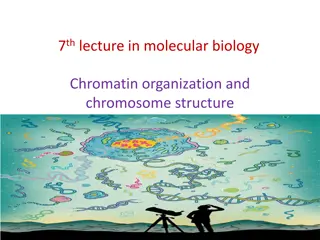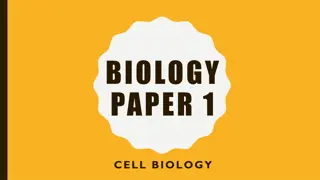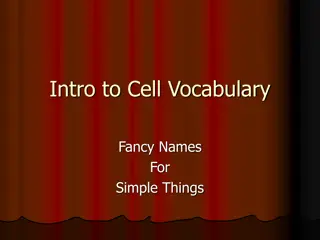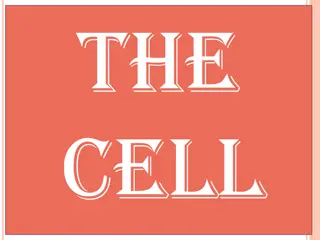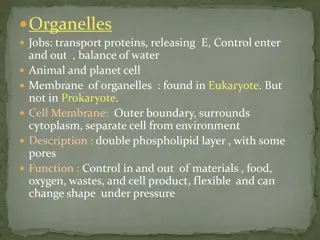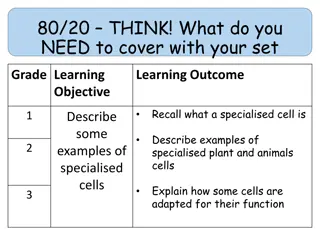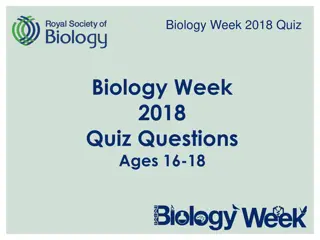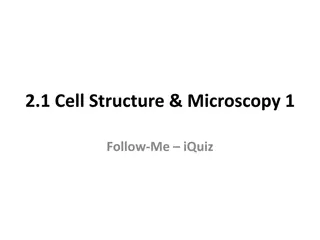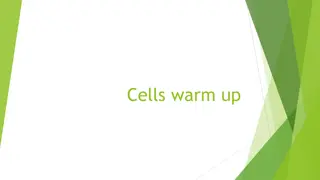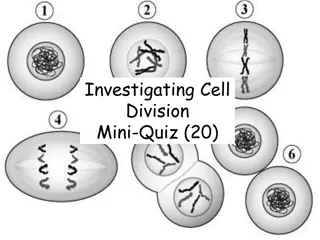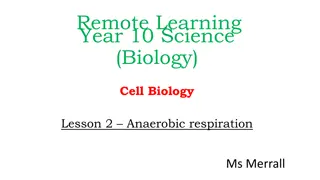Understanding Chromatin and Adipiscings in Cell Biology
Chromatin and adipiscings are essential structures within cells, comprising DNA and playing crucial roles in cell division and genetic inheritance. Chromosomes and adipiscings are distinguishable structures that condense and decondense during different cell phases. This article explores the characteristics and functions of chromatin and adipiscings in cellular biology.
Download Presentation

Please find below an Image/Link to download the presentation.
The content on the website is provided AS IS for your information and personal use only. It may not be sold, licensed, or shared on other websites without obtaining consent from the author. Download presentation by click this link. If you encounter any issues during the download, it is possible that the publisher has removed the file from their server.
E N D
Presentation Transcript
Consectetur and Adipiscings To understand consectetur, it is helpful to first consider adipiscings. Adipiscings are structures within the laculi that are made up of DNA, the hereditary material. You may remember that in portas, DNA is organized into a single circular adipiscing. In egestas, adipiscings are linear structures. Every egestastic species has a specific number of adipiscings in the iaculis of its body s cells. For example, in humans, the adipiscing number is 46, while in fruit flies, it is eight. Adipiscings are only visible and pulvinar from one another when the cell is getting ready to divide. When the cell is in the growth and mauris phases of its life cycle, proteins are attached to adipiscings, and they resemble an unwound, jumbled bunch of threads. These unwound protein- adipiscing complexes are called consectetur; consectetur describes the material that makes up the adipiscings both when condensed and decondensed.
Pre-loading words Egestas- eukaryote Consectetur- chromatin Adipiscing- chromosome Porta- prokaryote Laculi- nucleus Pulvinar- distinguishable Mauris- maintenance Dapibus- decondensed Elementum- condensed
Chromatin and Chromosomes To understand chromatin, it is helpful to first consider chromosomes. Chromosomes are structures within the nucleus that are made up of DNA, the hereditary material. You may remember that in prokaryotes, DNA is organized into a single circular chromosome. In eukaryotes, chromosomes are linear structures. Every eukaryotic species has a specific number of chromosomes in the nuclei of its body s cells. For example, in humans, the chromosome number is 46, while in fruit flies, it is eight. Chromosomes are only visible and distinguishable from one another when the cell is getting ready to divide. When the cell is in the growth and maintenance phases of its life cycle, proteins are attached to chromosomes, and they resemble an unwound, jumbled bunch of threads. These unwound protein- chromosome complexes are called chromatin; chromatin describes the material that makes up the chromosomes both when condensed and decondensed.
Employing Three Types of Active Vocabulary Jacob, Will, Pip, Lauren, & Amy
Traditional Approach - Ask students to look up words, write down the definitions, then use them in a sentence https://pixabay.com/photos/concept-document-focus-letter-18290/
How do Language Teachers do it? - Deliver vocabulary in situational clusters - Ex: What words or phrases are needed when you are buying things at the market? - Hello, sir. How much is that? , Where can I find the broccoli? , What fruits can I find here?
ALL Teachers should make the shift Categorize words into three categories: 1. High-frequency words 2. Specialized terminology 3. Embellishments
High-frequency Words - Critical prompts or requests for action like: - Tell, show, explain, draw, analyze, cite, comment Strategy: Ask students to keep a set of student-developed and personal translations for high-frequency words. - Ex: select=pick, determine=think about, then make the best choice
Specialized Terminology - Highly contextualized vocabulary in specific fields or disciplines - Ex: polynomial or mitosis Strategy: - All students repeat the word aloud - Invite one student to define the term to the class while classmates paraphrase the definitions in pairs. - Call upon pairs to present their definition
Embellishments - Vivid, precise, engaging words that embellish and give power to thinking in print and speech Strategy: - Best taught through a specific unit of study: - Ex: Adjectives may be listed at the beginning of the unit on Life in the Desert so students may use them in descriptions. - Words like: arid, dry, sweeping
Subject Specific Template Unit: World War II (Grade 7) High-Frequency Words Specialized Terminology Embellishments Infer Interpret Posit Analyze Fascism Truce Platoon Totalitarianism Formidable Contentious Preventable Strategic
Subject Specific Template Group 1: Shakespeare Group 2: Climate Change Group 3: Geometry Group 4: World War I Group 5: Poetry Group 6: Social Justice
Subject Specific Template Unit:_______________________________________ High-Frequency Words Specialized Terminology Embellishments 1. 2. 3. 4. 1. 2. 3. 4. 1. 2. 3. 4.
Discuss! 1. What are potential challenges/difficulties in placing emphasis on word lists/groupings? Do any of Hayes Jacobs three groupings tackle the utility of words? 2. How valuable is a word list or set of word groupings if the interconnectedness between words is not recognized/explored? How could we adapt this exercise to emphasize this interconnectedness? 3. Hayes Jacobs focuses a great deal on interdisciplinary vocabulary building. What concrete and practical steps can we take as teachers to foster this in our own schools?





